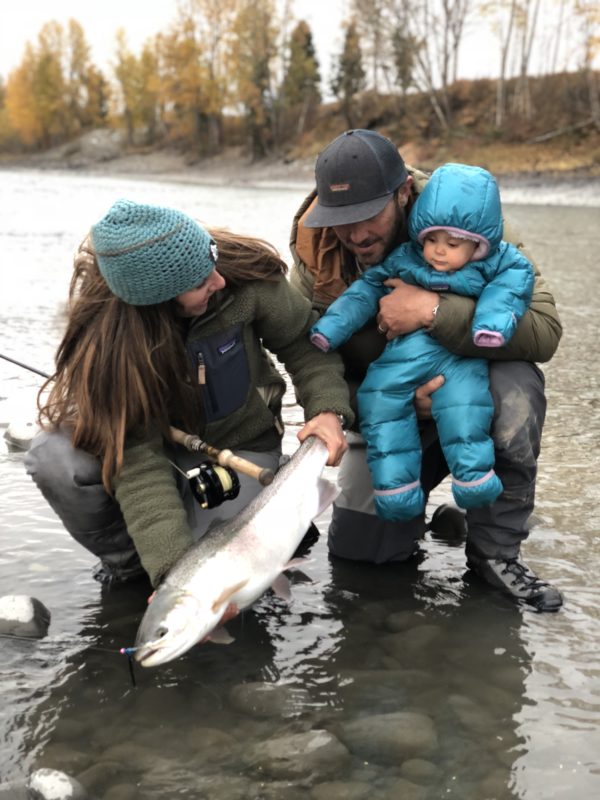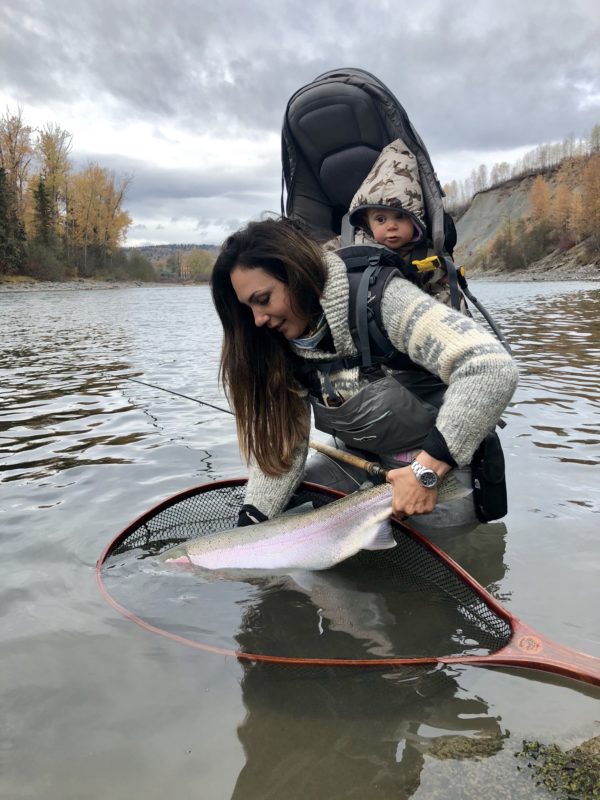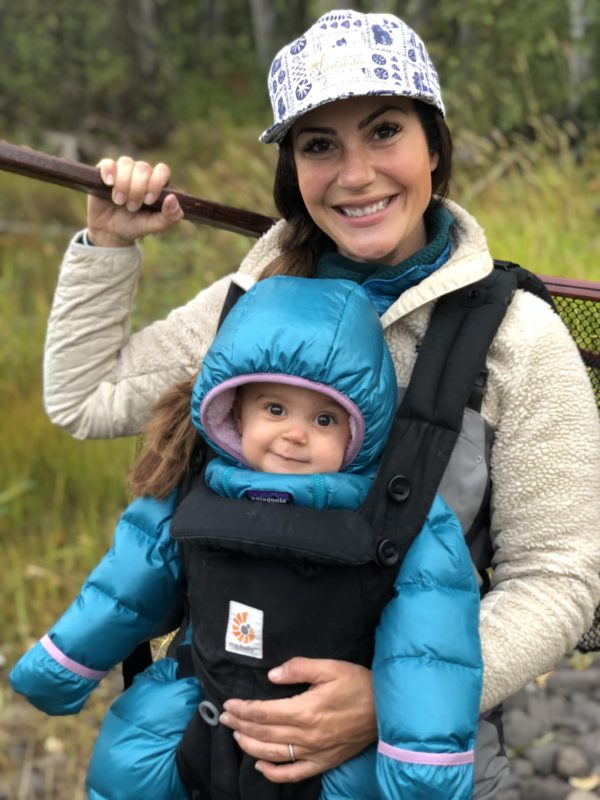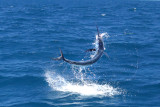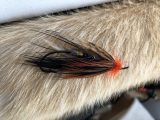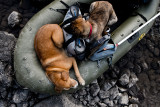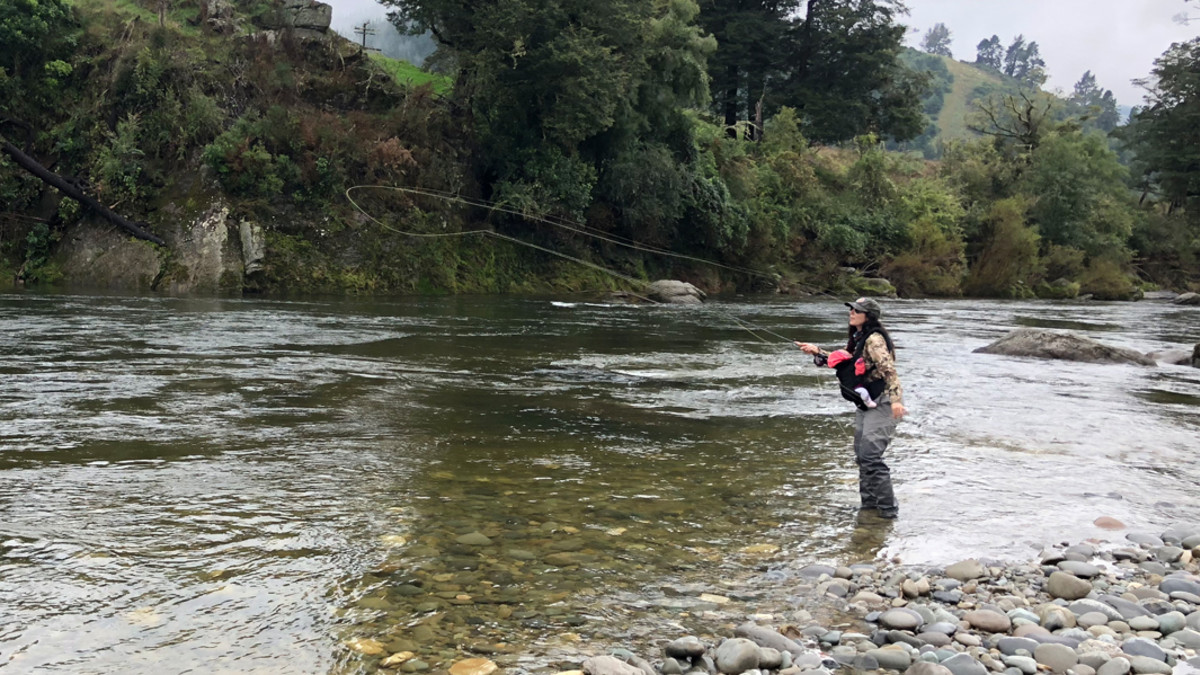
When it comes to fishing with a baby, it can be hard to plan accordingly. Planning (as all of us parents laugh aloud) may not always be successful, but it certainly doesn’t hurt to try. With kids, every day is different from the last, every child is different from the next, and Mother Nature can be as unpredictable as a hungry, over-tired toddler clutching a bowl of spaghetti.
As parents, we try our hardest to be organized and prepared, but it doesn’t take much to throw wrinkles into a smooth day. Having a baby doesn’t mean that your time outdoors has to come to a screeching halt, it simply means that your time outdoors may require more foresight.
Here are ten things I’ve learned about fishing with a baby.
1). Safety First — It Starts from Within
Every parent knows themselves and their baby best. Some parents might be more comfortable on their feet than others, while some may be more accomplished at casting or fighting fish.
As quick as pride goes out the window in the delivery room, it should disappear equally as fast on the water. If you’re unsteady while wading, choose rivers with fine substrate, or ask your spouse to do the carrying. If you’re regularly hitting yourself in the back of the head with your (barbless) hook, well, you should probably sort that out before attaching a little person to you.
Be true to yourself when considering your strengths and weaknesses. Not all anglers are created equally and experience plays a major role in choosing which fisheries to introduce your baby to.
It’s a good idea to be up to date with infant CPR and any other children’s first-aid courses offered in your area. I’ll elaborate on safety items later in this article, but for now, start by taking a deep look at yourself and your abilities. The fantastic thing about parents is that this usually goes without saying. Rarely have I seen a parent put their child at risk — whether it be indoors or out.
2). Carriers
There are so many baby carriers on the market, it can be hard to know which one is right for you. Plus, they’re expensive. It’s easy to rack up dollars on yet another item that won’t last you through to the next growth spurt.
Carrier compatibility depends on the age, size, and strength of your baby. When babies are really young they can’t hold their heads up on their own, so backpacks and outward facing carriers are not suitable. Choosing a carrier is a personal decision, so you’re bound to hear varying reports, but what it really comes down to is what is most comfortable for you — and safest for your baby. I must note that there have been cases of babies suffocating by being placed too deep in a carrier with limited oxygen— an absolute devastation that’s almost entirely preventable. Wraps and slings comfortably cradle babies, but it’s important to ensure that your little one isn’t slumped or positioned without oxygen flow. I found this stage (around zero to four months) the most stressful.
During this early stage you can also use an infant insert in a carrier like the Ergo-baby or Baby Bjorn, which you can later remove once your baby is a little bigger. You may also be interested in trying out a wrap (which can be difficult to master), or a sling (which is similar to a wrap, but without the confusing tying steps).
While the comparison of carriers is far too variable and broad to really dive into here, I used the Baby K’taan Sport when my daughter was really young. It was easy, packable, comfortable, breathable, and offered multiple rigging options. As my daughter began to hold her head up, I switched her to the forward-facing Ergo-baby.
Be mindful of infant hip safety when wearing a carrier, and be sure to read up on how to properly position your baby when strapping him or her in. Note that such positioning depends on whether you are facing them in or out. I advise most anglers using a single-hand rod to fish with their babies facing inward, and recommend using the sun cover to keep the back of their head safe from the elements and bad casts. More on casting later.
Choosing a backpack will likely be one of the bigger decisions you’ll make as an outdoor parent. Backpacks can last a child until they are around three years old and are therefore somewhat pricey. I have only owned one child backpack, a Deuter, and it has been a game-changer for us.
Backpacks allow your baby to see everything you’re seeing, and more. My daughter absolutely loves watching fish and animals at such close proximity. The giggles in my ear are priceless — plus she naps comfortably in it (in fact, it’s the only way she’ll nap these days). The high back keeps her head safe, and the built-in cover keeps her out of the rain and sun. There are countless other features built into these carriers.
3). Bugs
The biggest disappointment I had with slings, wraps and carriers is the shortage of bug-nets on the market (and by shortage, I mean none). My daughter’s first real fishing excursion was a week-long trip to New Zealand. The sandflies there are vicious enough to test the patience of the Dalai Lama, let alone a new mother desperate to feed her baby without also feeding blood-suckers.
While there are multiple bug-net options available for backpacks, the slings and carriers didn’t have any. So I made my own custom net to fit my Ergo-baby. I bought the finest mesh the fabric store sold (it cost me two dollars) and then cut one snap off each side of the Ergo’s adjustable hood. I hand-stitched the snaps into the netting so that they would clip the net directly into the carrier. From there, I simply cut the other two ends into a taper and tied them in a knot around my waist (think of the whole shape as being similar to an apron).
My daughter was protected from head to toe from mosquitoes, wasps, and sandflies, and she could still breath through the mesh. It was possible to breastfeed her while she was undercover, but if your baby is bottle fed it doesn’t hurt to pack a light, compact shelter. I pack one anyway for diaper changes, etc.
4). Life-Jackets
The smallest life-jacket I could find was for a baby no lighter than nine pounds. After months of research, I settled on a Baby Salus Bijoux, which is designed to ensure the baby turns face-up. The plan was to take our five-month-old daughter bass fishing in some flat rivers and lakes. We did a trial run in the pool and were comfortable with the jacket’s safety features.
All went well until we were actually in the boat and ready to fish. She didn’t comfortably fit into my carrier while wearing the life-jacket and, considering I also needed to wear a PFD (otherwise it would completely defeat the purpose), the bulk was all just too much.
I reached out to fellow parents to ask how they brought their babies onboard with them. The responses varied, but almost all of them seemed dangerous: strapped in a car seat, tied to a pool noodle, secured to a parent without either of them wearing life jackets.
While there are some parents who seem to have this part of outdoor life figured out, I am not one of them. Now that our daughter is almost a year old, we use her PFD for short boat-rides (primarily for transportation from one spot to the next), but we are waiting until she’s a little older before we try to fish from the boat again.
5). Sunglasses
It’s best to get your baby used to wearing eye protection as soon as you can. There are a bunch of different infant glasses on the market. Admittedly, there are times when I fail to put glasses on my little one (when she is forward-facing, or shielded by the canopy / high back of the carrier), but she usually has glasses on. Casting aside, hooks are commonly thrown into an angler’s face when a fish “spits the hook”, or a snag suddenly comes free.
Of course, the sun and glare from the water are major reasons to have glasses on your child. The sun is an old warrior — and he doesn’t play favorites. When I take my daughter fishing on the flats, I pack sunglasses, water (I even dissolve an electrolyte in her cup), appropriate clothing, and/or sunscreen.
6). Dress Accordingly
You’re only as good as your layers when out in the elements. In my experience, most adults don’t know how to properly dress themselves for the sun or snow, let alone a baby.
For tropical weather there are some excellent sun specific items that will save you from feeling obligated to slather your baby in sunscreen. More complex is the layering system for cold weather. It hurts to spend big bucks on technical apparel for a rapidly growing person, but it’s a major part of the “pay to play” game. Just as you’d want to ensure you are layered in the cold, babies also need a base layer, fleece layer, and a one-piece bunting. I use a light polyester suit on cool days and a down-filled one on extremely cold days. She is always toasty and warm, and we have never had a complaint about being cold.
7). Wading
Fishing with a baby requires slowing everything down — especially when walking on rocks or wading in water. There will be no “running for nets” or “chasing fish downstream”.
Naturally, the biggest pushback here is the classic “what if you fall?” argument. Holding your baby and walking on any uneven surface is going to come with a very real chance of stumbling. Just as you’d cautiously step off the curb when in the city, you must exercise that same caution while on the water. Again, this comes down to your own level of comfort. Personally, I am far more comfortable walking on uneven earth than I am walking in a city. I find cities distracting, overwhelming, and I’m nervous about whizzing vehicles and trains. I’d even argue that (for me), walking in the city is more dangerous than taking her to the river.
The bigger issue here is how far out you wade. There is no reason to wade far when fishing with your baby (or even when on your own). For starters, their feet will get wet if you step in too far, and there is also the concern of falling into the river. True, it can actually be easier for some anglers to wade up to their knees than their ankles, but it’s rarely necessary to wade any deeper than that. Fish are often closer to shore than we realize.
This may also be a good time to work on improving your casting so that you can cast farther and more accurately.
Don’t fish above log jams or anywhere you’d be in strife if you were to fall in. It doesn’t need to be a fine line between safety and having fun. Simply put, don’t put yourself in danger’s way and it will have a harder time finding you.
8). Snags (Are the Devil)
Pack a bunch of extra flies and be ready to lose them. When every step you’re taking is slow, careful, and calculated, an unexpected snag can really sour a mood. There are several ways to handle this situation: walk slowly downstream to see if you can get it out (do not wade in deeper to try and kick the fly out from under the rocks), or bust it off and stay exactly where you’re standing.
If you are intent on getting your fly back, here are a few tricks that may help you out. Put your rod tip in the water and wait for the current to pull the belly of your line downstream, therefore freeing your snag (hopefully). Or try walking slowly towards the snag, while lifting your rod tip. Walk several steps closer, all the while continuing to raise the rod until it’s at a seventy-degree angle behind you (1:00 on the clock). Then raise your arms and rod tip as high as you can in the air before roll-casting your line directly at the snag. By doing this, the weight of the fly line helps pop the snag out.
9). Adjust Your Cast
For me, as my daughter grew, my casting needed to adapt as well. While single-hand casting or fishing conventional gear, she was fine mounted to my chest, but Spey casting required some alterations.
With the single-hand rod, I use more of a sidearm style. The rule in fly-casting is that the line always follows the tip of the rod. Provided the wind is blowing away from you, a fly-cast out to the side will ensure that the line steers safely away from you and your baby.
When Spey casting, this gets a little trickier. Having a baby in a backpack likely won’t do much to affect your casting, but a baby mounted to the front of you will. Nothing is impossible, but it takes an understanding of casting physics to know how to adjust your cast accordingly. Cack-handed (off-shoulder) casts are uncomfortable as the arms cross over the body and, consequently, your baby. It won’t hurt anyone (it’s just like giving a gentle hug), but it will feel awkward. I find that it’s easier to Spey cast when my baby is inward-facing because of the way she molds to me. When she’s facing out, I have to cast around little hands and feet that protrude into my casting stroke. To ensure safety, I set my anchor a little farther downstream. I also find that I need to raise my arms slightly higher to accommodate her, and I can’t drive my bottom hand into my torso with the same “oomph” that I would if she weren’t there.
10). Landing Fish
Before going out on the water, practice both kneeling down and standing up in your living room (have someone help you). If you tend to land fish by kneeling down, I assure you that it won’t be as easy getting back up with a baby on you. Standing back up on while on rocks and bearing the weight of a baby is not easy and can be an unnecessary risk.
In an ideal situation, you’d have someone there to help you land your fish (and to just be there in general), but there may be times when you’ll need to land one on your own. It’s likely you’ll lose a fish or two while trying to figure out the best way to do this.
I regularly remind myself that I’m fishing for two, so as long as she finds the whole process entertaining, it really doesn’t matter if I lose the fish. Too often I see anglers partake in an awkward dance with the fish while trying to bring it to hand.
A good trick is to raise the rod tip up and slightly behind you. The line will be taut and should start to slowly inch towards your face. From here, bring the rod forward and grab the slack line with your other hand. If you’re releasing your fish, a release tool is great to have handy.
The Judgement
Nothing starts a heated debate quite as quickly as conflicting parenting viewpoints. You think talking about vaccines gets people riled up? Try talking about taking children into the great outdoors.
It’s easy to understand an outsider’s perspective. Sure, fishing can be dangerous — so is driving on the highway, walking through Manhattan, and trying peanut butter. Some people believe that taking your child fishing is selfish, but that argument can be used in practically every application of parenthood. Driving your baby to the mall with you to buy a shirt for the Christmas party — selfish. Walking downtown with your baby to get a morning coffee — selfish. Perching them in front of the television so that you can get caught up at work — selfish. It’s a lose/lose battle, and it’s one that you are unlikely to ever win. You’d be far better off focusing your energy on figuring out what works best for you and your baby.


